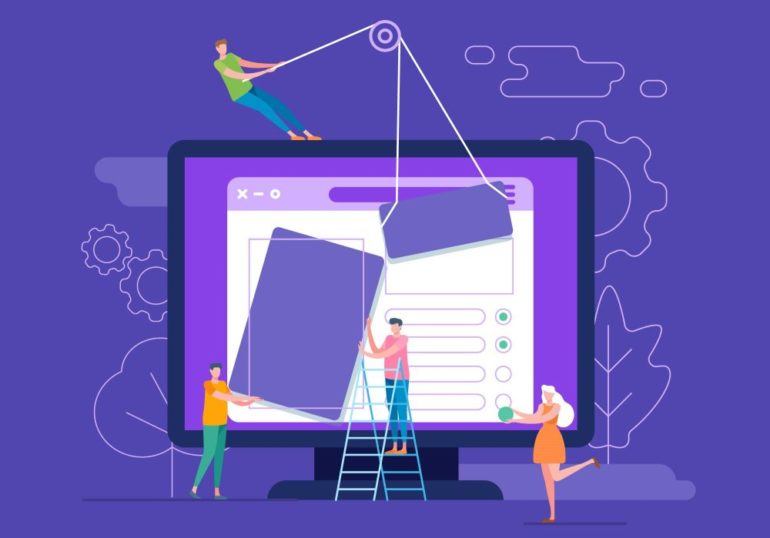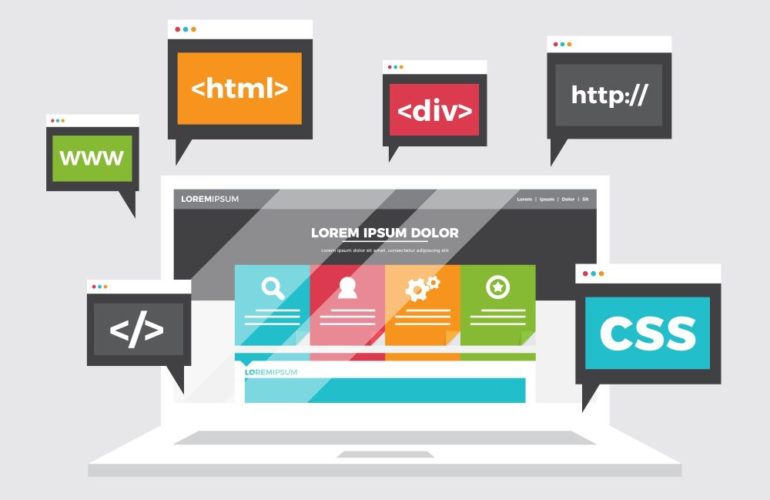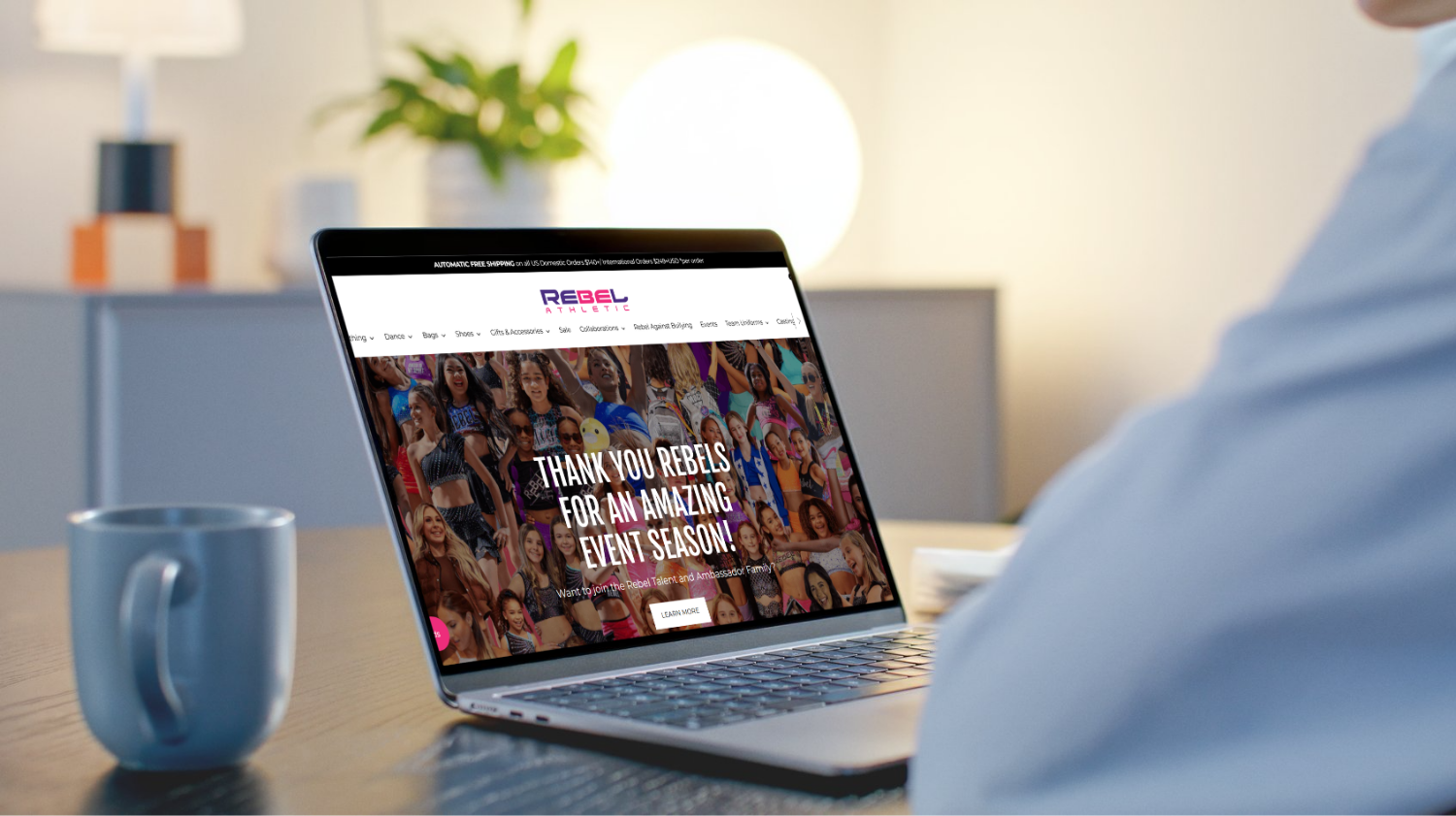Web designer and web developer are the two main positions that are essential to the process of creating a website. Although these two terms are frequently used synonymously, they really relate to different skill sets and duties.
Today, we will discuss the difference between website development and website design.
What is Web Design and Development
Website design and website development are two distinct disciplines that work together to create a functional and aesthetically pleasing website. While these terms are often used interchangeably, they refer to different aspects of the website-building process.

Web Design: A Focus on Aesthetics and User Experience
Web design is all about the visual and interactive aspects of a website. A web designer is responsible for creating the look and feel of a website, from the layout and colour scheme to the typography and imagery. They use tools like Sketch, Figma and Adobe XD to create mockups and wireframes that outline the overall design of the site.
Beyond aesthetics, web designers are also concerned with user experience (UX) design. This involves creating an intuitive and user-friendly interface that makes it easy for visitors to navigate the site and find what they’re looking for. A good UX design can make the difference between a website that visitors enjoy using and one that frustrates them and drives them away.
Web Development: A Focus on Functionality and Performance
Web development refers to all the work that you do for building a website. A web developer is responsible for building the site’s functionality, using languages like HTML, CSS, and JavaScript to create the structure and functionality of the site. They work with frameworks like React, Angular, and Vue.js to create dynamic, interactive interfaces.
Web developers are also responsible for optimizing the site’s performance, ensuring that it loads quickly and functions smoothly. This involves working with tools like Google’s PageSpeed Insights to analyze the site’s performance and identify areas for improvement.
Web Design vs. Website Development: The Overlap
Website design and website development are two distinct but closely related areas of website creation. Let’s check the main differences they have:
- Purpose: Website design focuses on the visual and aesthetic aspects of a website, while website development focuses on the technical aspects of creating a functional website.
- Skillset: Website designers typically have expertise in graphic design, typography, colour theory, and user experience (UX) design. Website developers, on the other hand, are proficient in programming languages, such as HTML, CSS, JavaScript, and back-end programming languages such as PHP or Python.
- Goals: The primary goal of website design is to create an engaging and visually appealing design that is easy to navigate and understand for the user. The primary goal of website development is to create a functional website that meets the specific needs of the user and the business.
- Tools: Website designers typically use graphic design software such as Adobe Photoshop or Sketch to create website designs, while website developers use coding and programming tools to build the website.
- Process: Website design typically involves creating wireframes, mockups, and prototypes, while website development involves coding, testing, and debugging.
- Output: The output of website design is a visual design, while the output of website development is a functional website.
Intertwined Processes
Web design and web development are distinct but interconnected processes. To effectively plan, execute, and deliver a website project, it’s crucial to understand the differences between these disciplines and how they work together. While web design deals with the visual and aesthetic aspects of a website, such as layout, color scheme, typography, and user experience, web development is more concerned with technical aspects such as coding, database management, and server configuration.
Despite these different focuses, web designers and web developers need to collaborate closely throughout the website development process. Web designers must have a solid grasp of web development technologies and constraints, while web developers must be able to implement design elements effectively.
Successful website projects require a collaborative approach that includes clear communication, goal setting, and progress reviews. This ensures that the website meets the needs and expectations of clients and users alike. By understanding the interplay between web design and web development, designers and developers can create cohesive and effective websites.
Tips for Web Development and Web Design
Web development and web design are constantly evolving fields, so it’s important to keep learning and experimenting with new ideas and techniques. Here are some tips that you can consider:

Web Development:
- Write clean, efficient code: This will make your website faster, more reliable, and easier to maintain.
- Use version control: This will help you keep track of changes to your code and collaborate with other developers.
- Optimize for SEO: Make sure your website is optimized for search engines by using keywords, meta tags, and other SEO techniques.
- Test your website thoroughly: Before launching your website, make sure to test it thoroughly to ensure it is functioning correctly across different browsers, devices, and screen sizes.
- Keep learning: Stay up-to-date with the latest web development trends and technologies by attending conferences, reading industry blogs, and taking online courses.
Digi-Tip: With the increasing use of mobile devices for browsing the web, it’s important to ensure your website is optimized for all screen sizes.
Web Design
- Understand the user: Design your website with the user in mind, by creating a simple and intuitive interface that is easy to navigate.
- Use whitespace effectively: Whitespace can help make your website more visually appealing, and can also make it easier for users to scan and read the content.
- Keep it consistent: Use a consistent design throughout your website, with consistent colours, fonts, and visual elements.
- Prioritize mobile design: More and more users are accessing the web from mobile devices, so make sure your website is optimized for mobile screens.
- Get feedback: Get feedback from users, colleagues, and other designers to improve your design and make it more effective.
Digi-Tip: Create a clear visual hierarchy on your website by using font sizes, colours, and placement to guide users’ attention to the most important elements of the page.
In conclusion, web design and web development are two separate disciplines that are closely intertwined in the process of building a website. Effective collaboration between web designers and web developers is crucial for the success of any web design and development project. However, project managers also play a key role in ensuring the teams work together seamlessly.
Project managers need to have a deep understanding of both web development and web design process to effectively communicate project goals and timelines, establish design and development standards, and keep the project on track. They should also foster a collaborative environment and encourage open communication between the teams. By facilitating a smooth and efficient workflow, project managers can ensure that the final product meets the needs and expectations of the client and the end-users.




